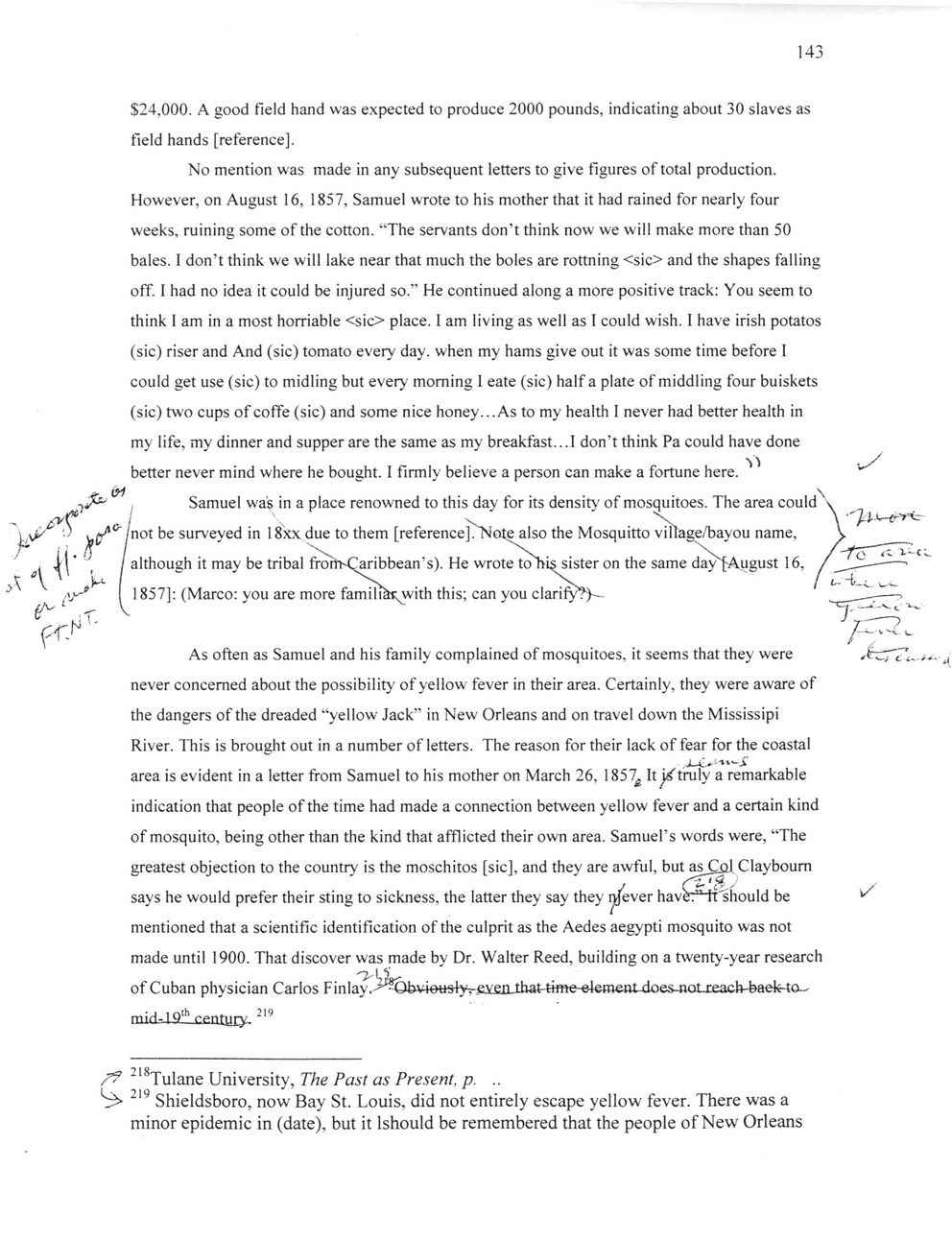This text was obtained via automated optical character recognition.
It has not been edited and may therefore contain several errors.
$24,000. A good field hand was expected to produce 2000 pounds, indicating about 30 slaves as field hands [reference]. No mention was made in any subsequent letters to give figures of total production. However, on August 16, 1857, Samuel wrote to his mother that it had rained for nearly four weeks, ruining some of the cotton. ?The servants don?t think now we will make more than 50 bales. I don?t think we will lake near that much the boles are rottning <sic> and the shapes falling off. I had no idea it could be injured so.? He continued along a more positive track: You seem to think I am in a most horriable <sic> place. I am living as well as I could wish. I have irish potatos (sic) riser and And (sic) tomato every day. when my hams give out it was some time before I could get use (sic) to midling but every morning I eate (sic) half a plate of middling four buiskets (sic) two cups of coffe (sic) and some nice honey...As to my health I never had better health in my life, my dinner and supper are the same as my breakfast...I don?t think Pa could have done better never mind where he bought. I firmly believe a person can make a fortune here. Samuel was in a place renowned to this day for its density of mosquitoes. The area could^ /not be surveyed in 18xx due to them [referencej^Note also the Mosquitto village/bayou name, although it may be tribal frorh-'Qaribbean?s). He wroterto'his sister on the same day'fAugust 16, 1857]: (Marco: you are more famili^with this; can you clarify?)-- As often as Samuel and his family complained of mosquitoes, it seems that they were never concerned about the possibility of yellow fever in their area. Certainly, they were aware of the dangers of the dreaded ?yellow Jack? in New Orleans and on travel down the Mississipi River. This is brought out in a number of letters. The reason for their lack of fear for the coastal area is evident in a letter from Samuel to his mother on March 26, 1857^ It^truly a remarkable indication that people of the time had made a connection between yellow fever and a certain kind of mosquito, being other than the kind that afflicted their own area. Samuel?s words were, ?The greatest objection to the country is the moschitos [sic], and they are awful, but as Cfil Clayboum says he would prefer their sting to sickness, the latter they say they njever have:1' ft "should be mentioned that a scientific identification of the culprit as the Aedes aegypti mosquito was not made until 1900. That discover was made by Dr. Walter Reed, building on a twenty-year research of Cuban physician Carlos Finla^. Jbvie^yrfi\mJhat4kne-e4ement daes-natreach-baek-ta-mid-i.9lh rentmy,219 7? 218Tulane University, The Past as Present, p. .. 219 Shieldsboro, now Bay St. Louis, did not entirely escape yellow fever. There was a minor epidemic in (date), but it lshould be remembered that the people of New Orleans

Jackson, Andrew 017